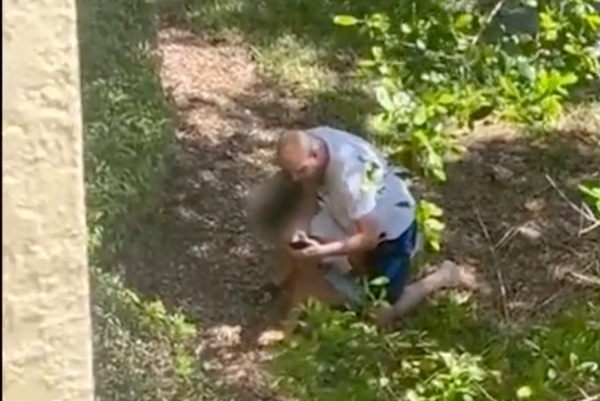
Tone, they say, is in the fingers – and perhaps that’s why selective picking has quickly evolved into one of the most personal techniques in modern guitar playing.
Heavily based on articulation, scores of forward-thinking guitarists are finding new ways to spice up their music with the technique. But where did it begin – and how has it evolved?
What is selective picking?
Animals As Leaders guitarist Tosin Abasi is credited for concocting selective picking in his lab of licks, combining legato playing with up and down picks to produce different timbres across clusters of notes. “You create note groupings by hammering on a number of notes and picking a number of notes,” he explained during a masterclass.
On 2014 track Kascade, he employs the technique across groupings of five notes. The first three notes are hammered – the first from nowhere – and the final two are picked with an up stroke then a down stroke with heavy palm muting, giving the phrase a percussive quality. With the player almost creating a delay pedal out of their fingers, the result in a rainfall-like patter.
“You’re gonna need low action to pull this off,” Abasi recommended in 2020. “[Otherwise] the hammer-on from nowhere is way harder.”
On 2016’s Inner Assassins, he applies selective picking in a more aggressive riff-like manner. He outlines a power chord with groups of three notes, and a four-note pattern completes the cycle. Importantly, the four-note lick consists solely of notes hammered on from nowhere, helping reinforce the technique’s percussive qualities.
Shred like a drummer
Players should welcome the discrepancies in the velocity of notes. “Selective picking, to me, is drumming on guitar,” early adopter Pomegranate Tiger explained to Guitar World. “You’re alternating hands; you’re either picking here or throwing a hammer-on there. That’s exactly what drumming is.” Check out his track The Cryptographer for another five-note grouping example.
“I do a lot of drum rudiment type things and it creates some pretty cool results,” Charlie Robbins told GW. “You wanna mute with your right hand to make the hammer on from nowhere sound like a picked note. But there's a slight timbre change, which gives it a more drum-like sound.”
Those discrepancies are where your individuality and expression shine.
Make it your own
Wolfgang Van Halen once quipped that his dad “kind of ruined” the musical landscape of the ‘80s. So dazzled was an entire generation of Eddie Van Halen's shred acrobatics, he suggested, that they all vied to copy him. Thankfully, selective picking hasn’t become copyist; nearly every player who tries their hand at it finds new ways to expressive themselves with the technique.
On Nightfall, Robbins’ interpretation hinges on the open G string, picked in groups of three. Meanwhile his left hand taps through arpeggiated shapes, with one note per string and all notes hammering on from nothing.
“Usually when I pick up speed, it’s a constant flow back and forth,” he explained, adding that when he’s doing slower grooves there are more variations in velocity. “It's about mixing and matching and creating a result you really like.”
Thus, even the subtlest of differences in timbre can hugely alter the characteristics of a riff, which is something Shubh Saran found on To Be. “The idea is repeated notes between the B and G strings, played in quick succession, that really give it that sound,” he told GW.
“That’s kind of what selective picking is – the same notes played, but articulated slightly differently, and so you get this interesting way of playing the same note. You can play it four times in a row, and it will sound different each time.”
An illusion of speed
Plini’s first foray with the technique is on Still Life. For the Aussie, selective picking has become a way to counter other limitations. “I’ve never been a good alternate picker and I've never put time into practising it,” he says. “So anything that I can do to mimic fast and percussive playing is attractive to me.
“I started by hammering on the first note then picking the second note three times, because once you pick four times you kind of get into alternate picking” – therefore losing the percussive crux of the technique.
Shubh Saran also benefits from such trickery. “I've never been a fast player,” he admitted. “A lot of my speed comes from Tim Miller and Allan Holdsworth [legato] style. There's something about guitar techniques that you pick up; sometimes they can be so alien to you, and sometimes it’s the exact thing that you need.
“Selective picking was that for me. Conceptually, I got it in a couple of hours. Afterwards I realized it was so natural because I’ve been doing a version of this my whole life. It creates the illusion of speed and intricacy.”

Get the tone
A player’s tone can be make or break the results of selective picking. “Tosin Abasi’s sound is a tight, tube distortion which allows the tone and pitch to shine through, while also allowing for crushingly heavy riffs,” Charlie Griffiths explains in his GW lesson (check it out for a more detailed analysis and finger exercises). “Just add some nice, ambient reverb.”
Abasi said: “I go for a split-coil sound. If you have a five-way switch I would go for position two or four. You can do it on a full humbucker and with sustained notes – but I really like the sound of muted, palm-muted split-coil sound. I add compression with a Friedman BE-100.”
If you want to build a tone from scratch, there are some key considerations. “You have to create the illusion of it being distorted without distorting,” Robbins said. “You want it at the edge of breakup, so it picks up all the little nuances.”
He adds that there are two ways to do it: “With amps that aren’t as pushed you can bring it down and then compress it. That almost works instantly, without much EQ.

“Or you can take a clean tone and use an overdrive pedal with a touch of gain, which will give you that fuzz without losing the clarity. Then you go to the EQ and the hot points are 2,500Hz for punch and then 4k and 8k to add brightness to it. Scoop out the mids to get a single coil sound that’s really percussive.”







